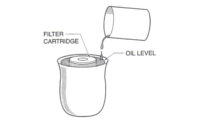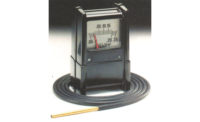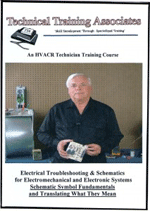Bob is a service technician who is well trained and nationally certified. However, he has sometimes suffered from the same confusion that all technicians occasionally do — the facts that he gathers may or may not point to the obvious cause of the problem or the best solution. But Bob has had something that no one else has. He recalled his long-time HVACR mentor and imagines him accompanying him as “Btu Buddy,” someone who reminded him to take time to stop and think before rushing to judgment, helping keep him on the right track, even with facts that are confusing.
Now, Bob’s company has promoted him to help train a new employee, right out of a school specializing in HVAC, just like Bob was. Bob is now Tim’s Btu Buddy. Tim is anxious to travel with Bob. Tim realizes that he is right out of school, with the theory and lab work that he accomplished in school, but still needs help. He knows that he worked with many of the components of the systems in the school, under ideal conditions with good light and air conditioning. Now it is into the field, sometimes under the house with poor lighting, or out on the rooftop in the sun, where the real action is. He is naturally and normally reluctant, but he has Bob to help guide him.
Tim had asked Bob to go into depth about tuning an oil burner during the last service call.
“You said that oil burning equipment requires more attention than any other type of residential heating equipment,” Tim said. “Can you explain why?”
Bob said, “Let’s talk about the heat source for the various types of heating equipment. The types of heating in most residential systems are electric resistance heat, gas heat, heat pump, or oil heat:
1. Electric resistance heat has a heating element that must exchange heat to a medium; air and water are the most common. The electrical switch gear, relays, contactors, and starters used to stop and start the power source require periodic maintenance. With an air system, the blower and filters must be maintained. With a water or liquid system, the liquid may have to be treated and filtered and the pump maintained. There is virtually no routine maintenance for the actual heat source. It either works or it doesn’t.
2. Gas heat systems used to require burner air adjustments to assure the burner was burning efficiently. Today’s end shot burners are very forgiving. They don’t clog with lint or need adjustment. The lint burns off in the flame.
3. Heat pumps require the airflow to be within tolerance for them to operate efficiently. The indoor and outdoor coils must remain clean and may need cleaning after many hours of operation, unless it is a dirty environment. The refrigerant charge is critical, but if the system is leak free and the system has the factory charge, the system is going to operate correctly and efficiently.
4. Oil heat is a different type of system. The oil is handled several times from the refinery to the point of utilization, the appliance. The oil has a chance for contaminants, such as rust, scale, dirt, sand, and water. Many times the oil is perfectly clean. The oil has to be filtered through at least two filters at the appliance. The first one, the primary filter, is like the filter we changed on the last service call, a fabric filter. There is another filter just behind the oil nozzle; it is a compressed very fine metal filter.”
Bob said, “Let’s start at the beginning and do an oil heat tuneup. The furnace we are going to use is a residential upflow furnace located in an enclosed garage.”
Tim asked, “What tools should I get from the truck?”
Bob said, “Bring the:
1. Tool pouch and add to it a nozzle wrench, a special wrench for removing oil burner nozzles, and the electrode gauge.
2. A fuel filter.
3. The selection box of oil nozzles.
4. A small pan to catch oil drippings.
5. The oil burner test kit, the one with the liquid filled containers. It is old fashioned but makes a great teaching tool (Figure 1).
6. The oil squirt gun for oiling motors.”
When Tim arrived with the tools, Bob said, “Get the draft gauge and let’s check the draft at the burner breach, above the heat exchanger. We can check the draft by inserting the draft gauge pressure port into that hole in the flue pipe. We will use this port for other instruments also (Figure 2).”
Tim asked, “Why are we checking the draft before we fire the furnace?”
Bob explained, “There should be a draft, or negative pressure, in the flue before we fire the furnace. If there is a positive pressure, when the furnace fires, it may puff oil smoke fumes into the room until the furnace gets hot. Those fumes can be drawn into the furnace blower door. Just a small bit of oil smoke can smell up a house.”
Tim said, “We have a negative draft of -.04 in. of water column. That is good.”
Bob said, “Let’s give the system a visual check and do some preliminary adjustments before we start the furnace:
1. Remove the flue connector where it turns up, at the elbow, and let’s see if it is clean. If there is any soot in the flue system, that is where it will likely gather.
2. Pull the main burner and let’s change the oil nozzle. It is always good practice to change the nozzle on a tuneup. Check the nameplate and check for the nozzle size. Oftentimes the last service technician will change the nozzle and not have the correct size. When that happens several times, the nozzle size can drift off.
3. Check the electrodes with that electrode gauge.
4. Use that pan to set the primary oil filter in and take it apart. Be sure to turn the fuel off at the tank. It is above the filter and will drain towards the filter. When you change the filter and have replaced the filter cartridge, add some oil from that gallon can and fill up the filter cartridge with fresh oil. The burner will hardly skip a beat when we start it up.
5. Change the air filter in the return air and check the blower wheel to make sure that it is clean. If it has dirt caked in the curves, we will need to remove the blower and clean the wheel outside. While you are in the blower section, oil the fan motor and fan bearings if there are oil ports.
6. If the blower wheel is dirty, it will be a good idea to clean the evaporator coil. You can bet it is dirty because all dirt collected in the wheel came through the filter and, during the summer, some of it will deposit on the wet evaporator coil. A dirty fan wheel equals a dirty evaporator coil. Use that jar of water sensitive paste and put some on the bottom of the oil tank measuring stick and put it to the bottom of the tank to see if we have any water in the tank.
7. Walk through the house and make sure all of the registers are open and free to blow air.
8. Install the vacuum gauge in the pump inlet and the pressure gauge in the pump outlet. We want to know that the difference from the inlet to the outlet is 100 psig.”
Tim said, “Wow, that is a lot and we haven’t even turned the furnace on.”
Bob said, “Yes, it is a pretty big job, but we are removing any doubts outside the furnace and now only have to check the performance.”
After everything was completed, Bob said, “Start the furnace and let’s let it warm up. Using that hole where we checked the draft, we will put in the thermometer and run the furnace until the thermometer stops rising. The furnace will be up to full operating temperature.”
The furnace had been running for about 10 minutes and the thermometer had risen to over 500°F. Tim said, “What do we want to do next?”
Bob said, “We need to use the smoke test strips and the instrument to draw flue gas through the test strip and see what the smoke level is.”
Tim did the smoke test and said, “It is showing a smoke level of 0 by comparing the sample to the comparison chart (Figure 3). That looks good.”
Bob said, “Now, use the test kit and check the flue gas for CO2 content. If it is about 10½ percent, we are good to go with an efficiency of about 80 percent, good for an oil furnace.”
Tim said, “Well, all looks good. What would have happened if we had not done the preliminary work before checking the efficiency?”
Bob said, “It is hard to say. Maybe the nozzle didn’t really need changing, but varnish has a way of forming in oil nozzles over time, closing the calibrated hole. It might have been OK for a while, but I really like the idea of making sure everything is as good as I can make it before I drive away. Callbacks are expensive and the company keeps an eye on them. Get too many and you will get a reputation in the industry that you really don’t want. Do it to the best of your ability and you will minimize them.”
Tim said, “You are right about that.”
Publication date: 3/24/2014












